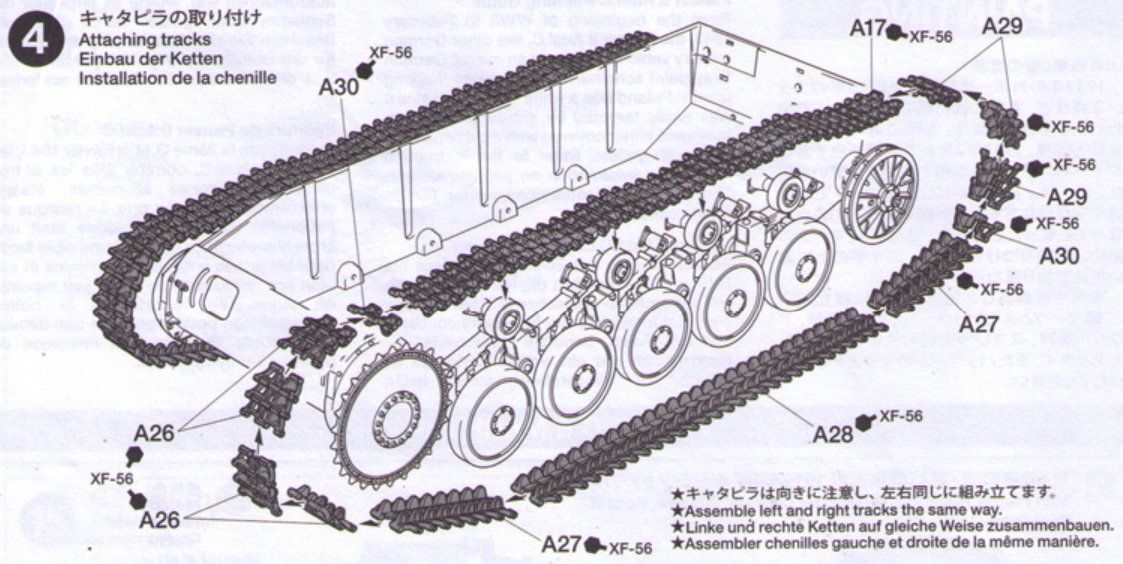ATV’s provide tons of fun and is a great way to get your mind off of the daily stresses. But that fun can come to a screeching halt very quickly if you happen to run out of gas. That poses the question: How far can an ATV go on a tank of gas?
There are too many factors to consider to give a universally definitive answer to this question. In general though, ATVs can go anywhere between 40 – 200 miles on a single tank of gas, depending on the tank size, the type of driving, the type of ATV, etc.
Now that we’ve established a very broad idea of how much you can get out of a tank of gas from a hobby ATV, let’s take a deeper look at the different kinds of ATV and how different situations will affect your gas consumption.
The question about fuel capacity and economy can be quite difficult to answer accurately since there are so many factors to consider like how aggressive you drive, engine size, the type of ATV, etc.
To determine how far your ATV will get on one tank of gas, we’ll have to first separate them into groups according to the different types of ATVs, namely small Hobby ATVs, Sports ATV, and Utility ATVs.
Each of these has different types of engines and different engine sizes, therefore making them different and affecting the distance you can go with each one of them on a tank of gas.
Hobby ATVs are meant for those heading to the nearest dirt track to have as much fun as possible, comparably making them like small dirt bikes. Getting on one of these is the perfect way to unwind after a day of stress, whether you’ve been in an office all week or your hands are hard from work.
These ATVs have smaller gas tanks, only a few gallons, and it’s recommended that you grab a few extra gallons before heading off onto your adventures. These ATVs are also available in up 600cc engine capacity models, making them fast, light, and lots of fun when the road is covered in just the right amount of dirt.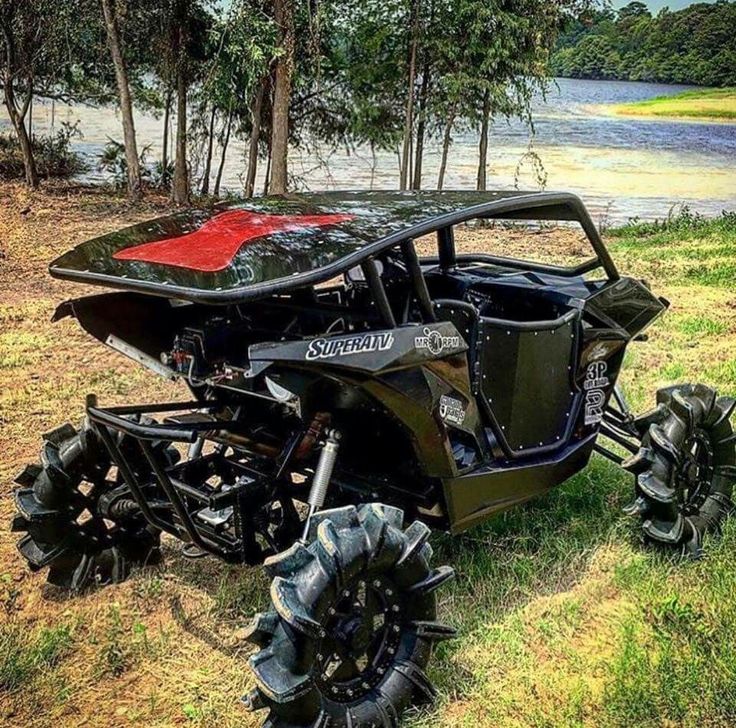
The best recreational ATVs that are used by hobbyists only have a few miles of range with their gas tanks, but they are very lightweight and make it easier for you to jump, slide, play, and have as much fun as possible and aside from sports ATVs, might be the best adrenaline rush you can have on four wheels with no roof.
Hobby ATVs usually get anywhere between 40 – 100 miles on a tank of gas.
These are the beasts, the raptors, the jumpers, and the Dakar champions that either go for days or simply need to complete a circuit in as little time as possible. These are ironically anything from 250cc engines that have small gas tanks to almost 1000cc engines that have gas tanks large enough for day-long rides.
The world of sports ATVs is one that is simply too large to sum up. The number of sports that they are used in is also too much to count, meaning that they would need their own, very long article to cover. Regarding the question of how far they can drive on one tank of gas, it depends on the situation in which they are being utilized and the person driving them.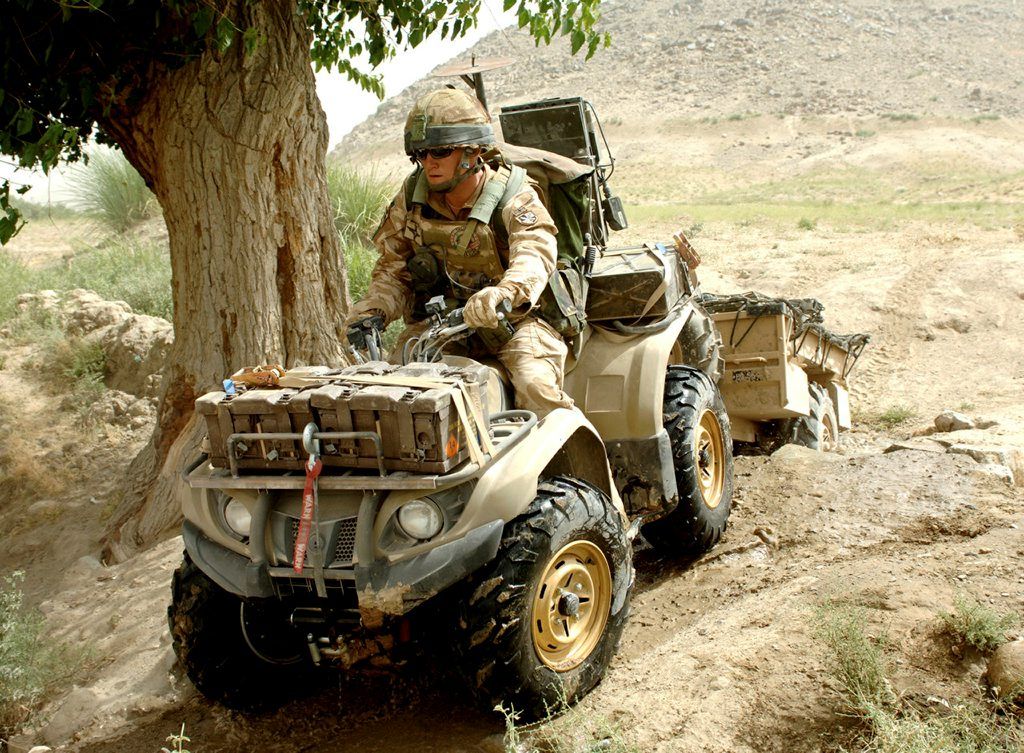
For circuit racing, they are usually used with smaller gas tanks, making them light and easy to maneuver. Circuit racing involves jumps, dirt, sand, and lots of fun times for the riders. This is why it’s important that these ATVs can be driven fast and for slightly extended periods. They usually complete around 30 laps of a circuit, with each circuit being around one to 4 miles in length.
Then there’s the long-distance sprinters, the off-road champions, and the ATVs that are used by those that truly know what they’re doing. Used in championships like the Dakar and adventure runs, and taking you through some of the toughest terrains for an ATV to go through. Easily reaching distances of thousands of miles, these races are intense and can last for several days.
As a side note, these ATVs can reach speeds of almost 100mph and should not be used when you’re still new to the off-roading and ATVs…
Sports ATVs are optimized for speed and distance, usually being close to 1000cc bikes that can be economical when needed. They can get anywhere between 100 or 200 miles on a single tank of gas, using new technologies that make them as economical and fast as possible.
They can get anywhere between 100 or 200 miles on a single tank of gas, using new technologies that make them as economical and fast as possible.
This is where you find the workhorses, the ATVs that know how to climb a mountain and also take the truck along with it.
These are heavy, large, and strength-based ATVs that favor torque over speed, allowing you to do things on the farm, ranch, or just driving around at moderate speeds. As an extra caveat, the ATVs that form part of this group are more relaxed and can even have roofs and come in two or three seaters, but they do cost a bit more.
The wonderful thing about these ATVs is that they can go almost anywhere, in a way that other ATVs may have trouble doing. Their ability to be four-wheel drive and have high torque lets them climb in and out of gorges that most other vehicles would not be able to manage. They can also be accessorized remarkably well too, letting you add hooks, luggage rails, and even lighting units for nighttime work.
Having a similar range to Sports ATVs of between 100 to 200 miles or more, on a single tank of gas, some of these larger, more equipped ATVs have the same power as most small cars. Anything from 200cc to 1200cc engine capacity models exists and the size of their gas tank increases along with their engine capacity.
Now that we’ve covered the different types of ATVs, let’s examine some of the other factors that can influence the fuel consumption of your ATV.
Weight plays a big role in fuel consumption and the lighter you can get your ATV, the better the fuel consumption that you will get.
Aerodynamics also plays a major role in fuel consumption and the less resistance you have while driving your ATV, the better your fuel consumption will be.
Low tire pressure, especially on the drive tires, can negatively impact your fuel consumption and always follow the manufacturer’s recommended tire pressure for the tires on your ATV.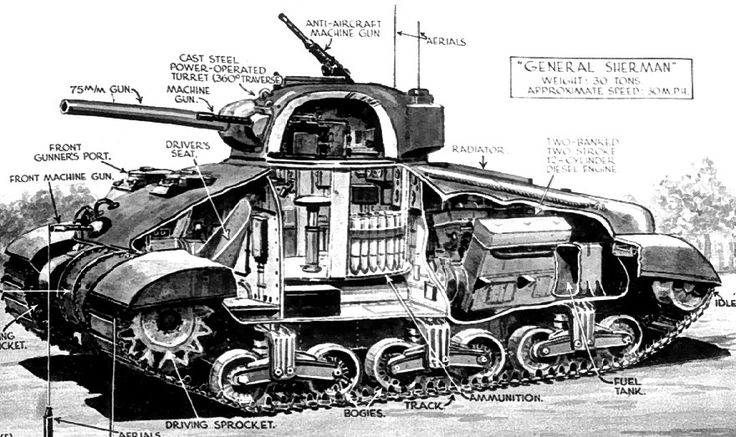
Needless to say, smooth even roads will yield much better fuel consumption than rocky and muddy terrains, but that’s where the fun lives.
Modified engines, as much performance, and fun as they can add to your ATV and off-roading experience, with the increased performance from the modifications, comes a heavier fuel consumption.
An engine that is worn out and out of tune will affect your fuel consumption and you will get much fewer miles per gallon as you would with your engine finely tuned and functioning optimally.
Here is a list of some popular ATVs along with their respective ranges (miles per gallon) according to fuelly.com.
| BRAND | MODEL | YEAR | MPG |
| Suzuki | LT-A700X KingQuad 4×4 | 2005 | 8.9 |
| 2007 | 25.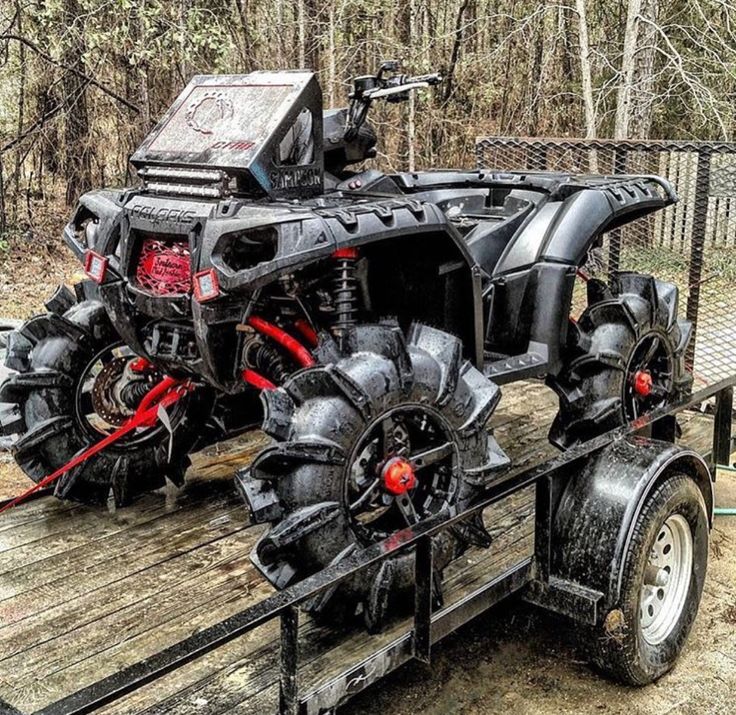 7 7 | ||
| Kawasaki | KVF650 Prairie 4×4 | 2002 | 10.9 |
| Can-Am | Commander 1000 XT | 2012 | 12.8 |
| 2016 | 29.9 | ||
| Commander 800R | 2015 | 9.0 | |
| Maverick X3 X rc Turbo R | 2019 | 14.8 | |
| Honda | TRX350TM FourTrax Rancher | 2001 | 16.8 |
| 2002 | 25.6 | ||
| 2006 | 35.4 | ||
| Yamaha | YFM700 Grizzly EPS | 2018 | 7.7 |
| 2019 | 19.5 |
When it comes to how far an ATV can go on a tank of gas, it all depends on the type of ATV you have, what you’re planning to do with it, and how hard you drive it.
No matter what the situation is though, just make sure you have a few extra gallons of gas nearby in case you run out of it. The last thing you want is for your fun to be cut short because you ran out of gas.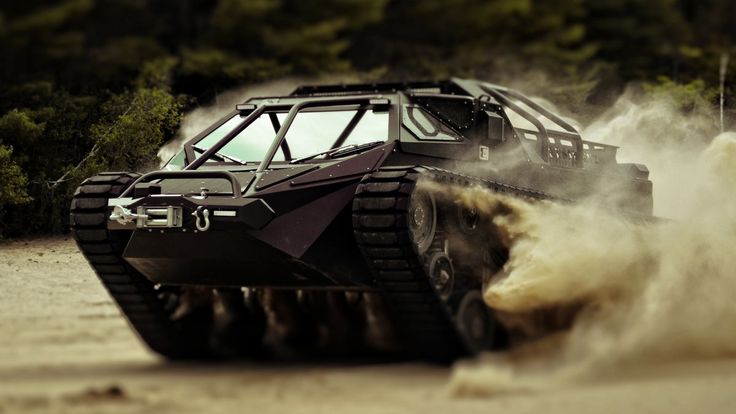
Also, be sure to check out our recommended gear section for the necessary recovery and maintenance equipment that you should always have with you while out on your off-roading adventures to help you out of those sticky situations.
by Lee
How far your ATV or side by side can go on a tank of gas dramatically depends on its horsepower, tank size, accessories, and your driving style.
Someone who cruises on a 500cc ATV is going to use less gas than the guy who drives his 1000cc ATV hard up a mountain.
If I had to give you a general idea, you could expect your ATV to go 50 to 150 miles on a single tank of gas depending on how you ride and what you ride.
The gas mileage can also vary from manufacturer to manufacturer. The numbers below are based on Polaris, Can-Am, Kawasaki, Arctic Cat, and Honda ATVs.
| CC | Miles |
| 50cc to 100cc | 5 to 15 miles |
| 110cc to 250cc | 15 to 25 miles |
| 300cc to 450cc | 20 miles to 50 miles |
| 500cc to 750cc | 40 miles to 100 miles |
| 750cc+ | 50 miles to 150 miles |
I’ve personally been able to go 100 miles on an 800cc fuel-injected Can-AM.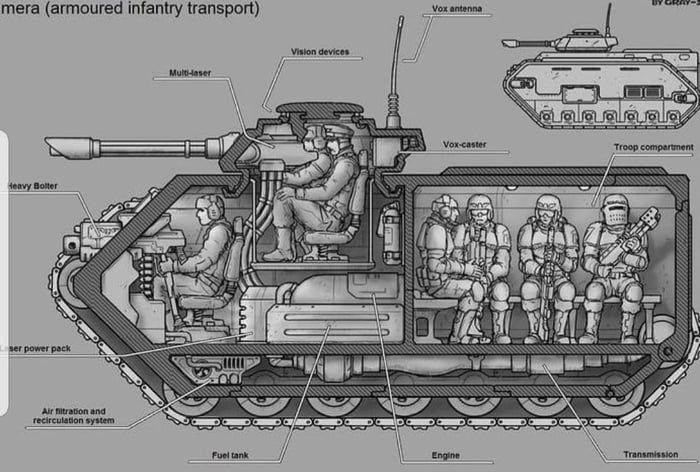 That number goes down quickly when I go in 4-Wheel drive, ride hard, go up a lot of hills, and so on.
That number goes down quickly when I go in 4-Wheel drive, ride hard, go up a lot of hills, and so on.
Keep in mind these are very rough numbers. How you drive, where you drive, altitude, tires, if you’re in 4-wheel drive, what you’re carrying, and so on can significantly affect distance. We’ll cover ways to increase how far you can go down below.
The easiest way to extend the range of your ATV or side by side is to pick up fuel packs.
I like getting these fuel packs on Amazon (Amazon Link Ad) because they’re easy to take on and off with the right bracket (Amazon Link Ad).
To see how these fuel packs work, here is a video.
If you want ways to increase the fuel economy of your ATV, this website can help.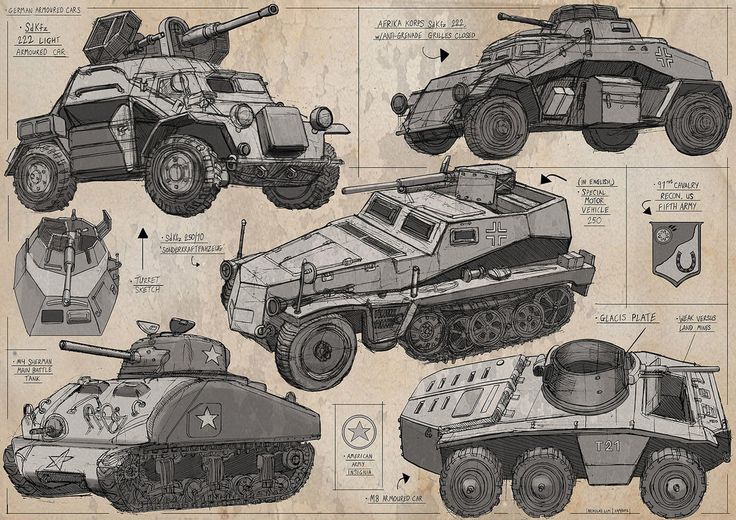
ATVs and side by sides don’t get the best miles per gallon (MPG).
ATV MPG number can vary from 5MPG up to 20MPG in most cases. I have seen some rare cases of smaller single-cylinder Honda’s get up to 30MPG. What can I say, Honda knows how to make engines.
You’ll get worse MPG in the woods than on roads or other flat grounds. You can easily subtract 25% off the total miles when you ride in the woods and uneven terrain.
Things that give you the worst MPG are mud tires or any oversized tires.
The MPG also varies depending on how fast you travel. The quicker you go and the harder you ride, the less MPG you get. Cruising at 20 to 30mph will get you the best MPG out of your ATV.
Unlike cars, ATVs, and side by sides, don’t show you a gauge that tells you your MPG. The most you get is MPH and fuel gauge with an odometer.
For the best results, you’ll need to figure out your ATVs MPG. Due to how each ATV is different with its own accessories, you’ll need to spend time figuring out the max your ATV can go.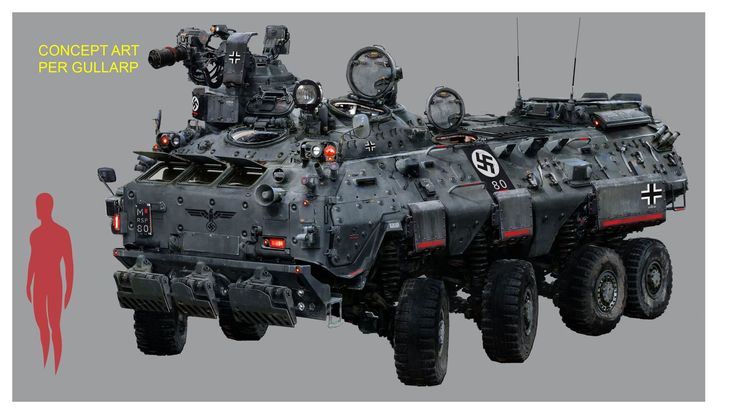 This will require carrying some extra gas with you just to be safe. You can get a good idea when at the halfway point of your tank on how far you can travel.
This will require carrying some extra gas with you just to be safe. You can get a good idea when at the halfway point of your tank on how far you can travel.
If you’re concerned about the fuel consumption, you need to get an ATV or side by side with fuel injection.
The easiest way to tell if you have a fuel-injected ATV is if it lacks a choke.
If all you do is put the key in and press start, then you have a fuel-injected model. If you have to pull a lever (choke) before starting, then it’s carbureted.
Carbureted engines will always use more gas than fuel-injected models. The good news is that it’s getting harder to find carburated ATVs, and it’s almost non-existent on side by sides.
It’s mostly kids ATVs or low HP ATVs that still have carbureted engines. Most 500cc or above will be fuel injected.
Learn more about fuel injection vs carb.
Yes, riding in 4 wheel drive will lower how far you can go on a tank of gas.
If you can stick to the 2 wheel drive to extend your gas mileage.
If your ATV has different driving modes or different keys, try using the slower key or mode to save on gas.
If you ride your ATV where it’s about to shut off because of the lack of gas, you’re destroying your fuel pump.
Those fuel pumps are not cheap, and they can be a pain to replace.
You want to put gas in your ATV when you get to the second to last bar, if not sooner. The fuel pump needs gas in the tank to work correctly and not get destroyed over time.
You will have worse gas mileage when breaking in a new ATV or side by side.
The engine is breaking itself in and will end up using more gas.
Don’t worry if your new ATV seems like it’s using a lot of gas or has bad MPG. This will be the case for the first 25 hours of your ATV or side by side.
It’s normal for the gas gauge to jump around when you ride.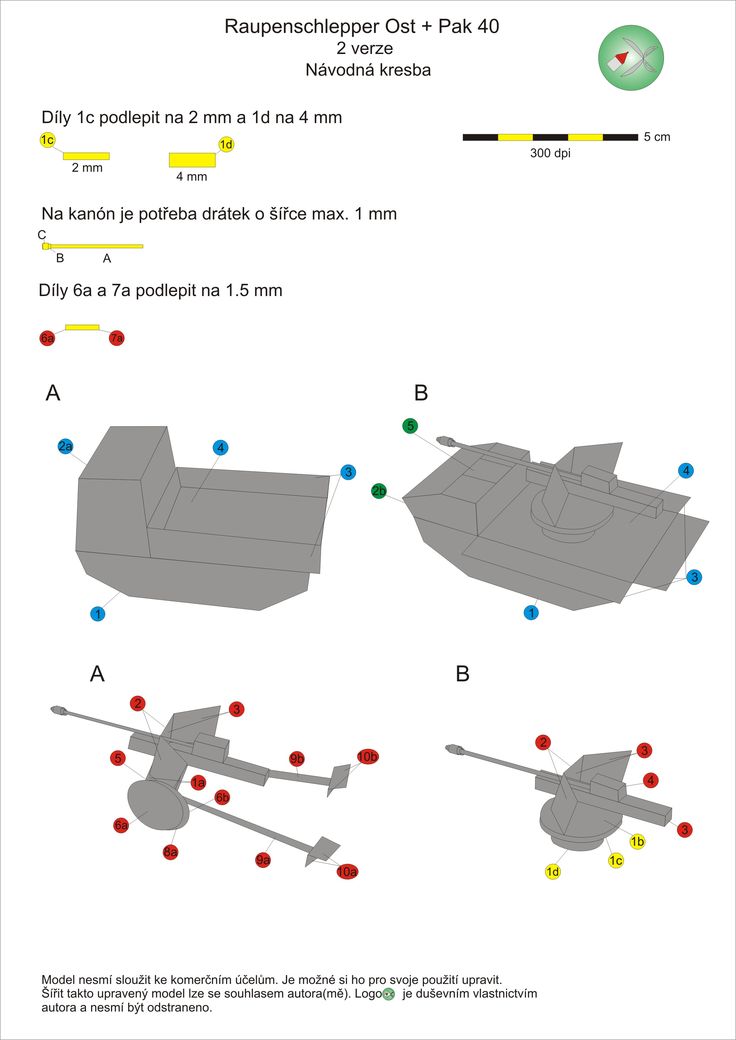
If you ride hard, the computer will quickly drop the bars in the expectation of you consuming more gas.
Also, the float in the tank will be bouncing as your ATV bounces so seeing the gas gauge jump around is normal.
Generally, an ATV is considered "multi-mile" when it reaches about 10,000 miles . However, more important is how it was looked after and how it was driven by the previous owner. Even with 10,000 miles on it, if the previous owner put the time and effort into caring for the ATV, there could still be a lot of life left in the car.
Accordingly, which is better Honda or Polaris ATV? Honda is known for its reliability, ease of operation, excellent ride quality, driver comfort and agility. Polaris is softer than glass in rough terrain. , it has great power, EBS works great, it's very comfortable to ride, and the power steering is top notch.
How many kilometers can an ATV travel on one tank of gasoline? A 5. 4 gallon ATV tanker can drive 108 miles averaging 20mpg. Factors affecting gas mileage: ATV type and age, tank size, weight, throttle, terrain, tires, engine size, carburetor, and maintenance. To make sure you don't run out of gas, check your 4-wheeler before you travel and take extra gas with you.
4 gallon ATV tanker can drive 108 miles averaging 20mpg. Factors affecting gas mileage: ATV type and age, tank size, weight, throttle, terrain, tires, engine size, carburetor, and maintenance. To make sure you don't run out of gas, check your 4-wheeler before you travel and take extra gas with you.
Also, how do you convert ATV hours to miles?
Multiply the number of hours your engine has been running by 60. . Use the resulting number to estimate how many miles your engine has. For example, 1,235 hours on the engine equates to approximately 74,100 miles.
ATV tires typically last as little as a few hundred to 4-5000 miles and over . Their life depends on the surface you ride on, the style of the tires, the hardness and quality of the rubber, age and a number of other factors. Expect 1-2 years if you drive a lot on the roads, or 5-10 years if you stay off the roads.
Are Polaris ATVs junk? Are Polaris ATVs junk? Polaris easily competes with any other ATV manufacturer.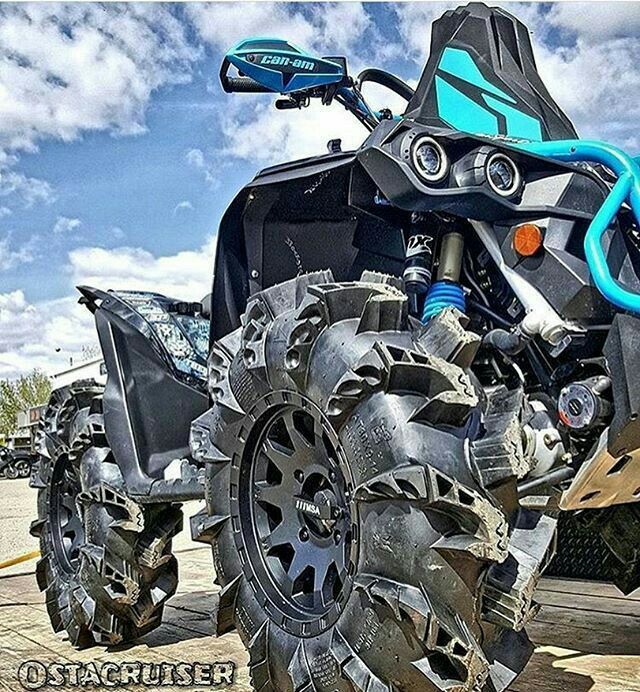 They make good ATVs, people just like different things. This works the same for other vehicles, cars, trucks, etc. You will get soy from every brand that has its own issues, but it doesn't. they are all garbage .
They make good ATVs, people just like different things. This works the same for other vehicles, cars, trucks, etc. You will get soy from every brand that has its own issues, but it doesn't. they are all garbage .
Do ATVs retain their value? The cost of ATVs does not drop much over time. after a few years their value remains unchanged . Most ATVs lose their original value 3-4 years after first use, and some models lose up to 30% of their base value, but the good thing is that after this period, their prices are mostly the same.
Why are Honda ATVs the best? Honda ATVs have earned a reputation for performance and reliability. Thanks to the explosion-proof transmission and metal gears instead of belts, this brand of ATVs can withstand heavy loads without breaking. There are The 's reliable and easy-to-use features make Honda ATVs the most popular choice among sport ATV riders.
The Ecoquad was the clear champion in fuel economy with 45.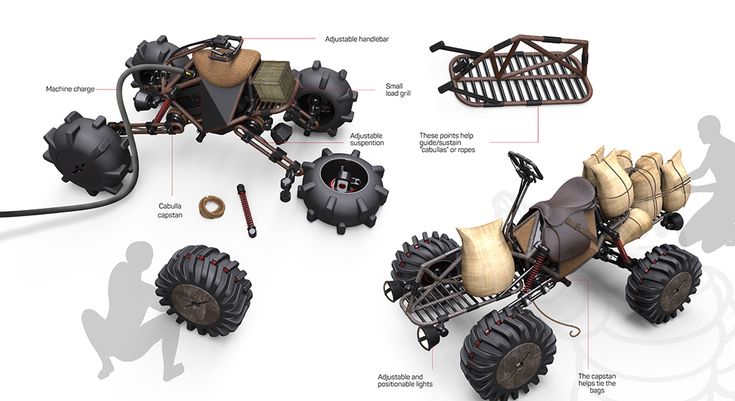 5 mpg despite spending most of its time at full throttle. The Honda followed with 32.1 mpg and the Arctic Cat diesel with 31.7 mpg, comfortably outpacing the Kymco and Polaris at 24.9.miles per gallon. The Quadzilla trailed with 18.6 mpg.
5 mpg despite spending most of its time at full throttle. The Honda followed with 32.1 mpg and the Arctic Cat diesel with 31.7 mpg, comfortably outpacing the Kymco and Polaris at 24.9.miles per gallon. The Quadzilla trailed with 18.6 mpg.
How many miles per gallon do ATVs get? How many miles per gallon can an ATV go? On average, you're looking at about 15 to 20 mpg for a new quad or one that's worn out in a couple of years. Everything will depend on how well you maintain it, and on the characteristics of the engine.
What kind of gasoline do four wheelers use?
However, most ATVs use regular 87 octane gasoline but can perform optimally with more expensive gasoline. Petrol 91 or 89 octane. . In other words, the higher the quality of the fuel, the better your engine will perform. In addition, some four-wheelers only use premium fuel.
Is 5000 hours too much? As a general rule, up to 2,500 hours is a well-run number, while 35,000-5000 hours is considered a high .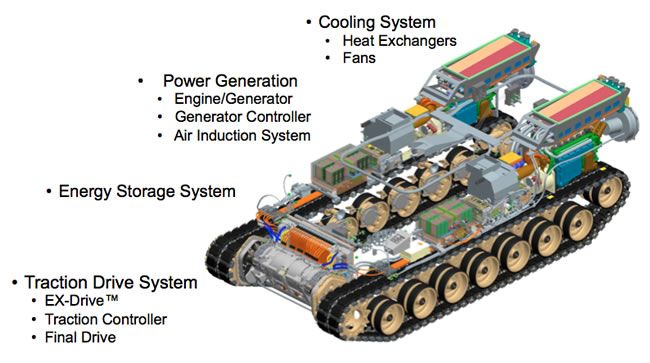
How many hours will the truck engine run? You are reducing the speed of the engine compared to driving on the wrong path because it is running at half its maximum speed. In comparison, it should probably have 3500 to 4000 hours of battery life. .
How many miles does it take to drive 2 hours?
How many hours is 2 miles?
| miles | Relaxed pace | Normal pace |
|---|---|---|
| 2 miles | 40 minutes | 30 minutes |
| 3 miles | 1 hour | 45 minutes |
| 4 miles | 1 hour, 20 minutes | 1 hour |
| 5 miles | 1 hour, 40 minutes | 1 hour, 15 minutes |
Nov 27 2021
See also
Should ATV tires spin? Multi-directional tread pattern for better grip on rocks. Multi-directional tires can be turned for even tire wear.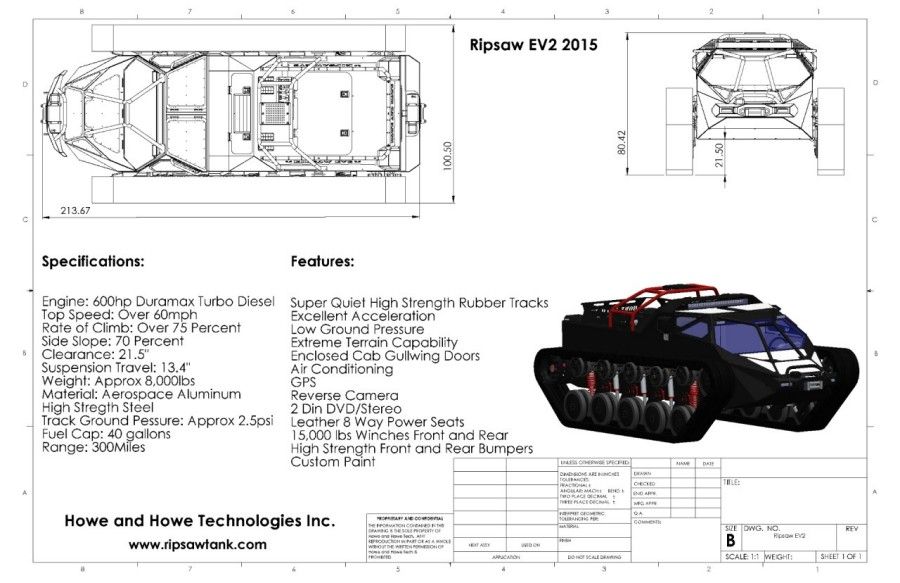 . Multi-directional tread pattern better grips side slopes. Multi-directional tires usually stop faster than directional tires.
. Multi-directional tread pattern better grips side slopes. Multi-directional tires usually stop faster than directional tires.
How often should I change the oil in my 4 Wheeler? In general, you should perform an oil change on an ATV. approximately every 100 hours of use or at least once a year .
ATV recommended normal tire pressure: 4 to 8 psi (psi).
Polaris made in China? Are Polaris parts made in China? Engines are still built in Osceola, Wisconsin. And also many parts are made in china . Just like the rest of the big names.
What should I look for in an ATV?
Who makes the motors for Polaris? All 2015 Polaris ORV lineup (Ranger, RZR, Sportsman and ACE) now equipped with ProStar 9 engines0005 . In the past, Polaris has partnered with other manufacturers (one of them was Robin/Fuji Industries) to supply engines for their ATVs and UTVs.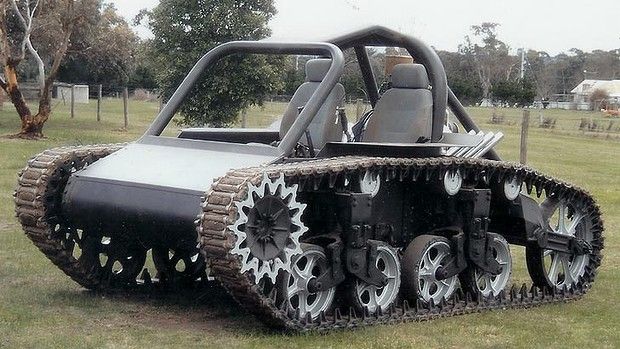
26 inch alloy wheels
double seat
reliable 40.8 hp engine
winch and tow bar as standard
The RM 500 is a landmark model for Russian Mechanics, combining the best qualities of utilitarian and touring models. This is the first all-terrain vehicle developed in Russia and for Russia.
The first Russians with a Taiwanese "heart", created in 2011, have a mileage of more than 10,000 km. Isn't this proof of reliability?
The basic equipment includes an electric winch, alloy wheels, rear-view mirrors, arch extensions, a complete set of lighting equipment, a towbar.
500 cc engine and 41 hp in combination with a competent selection of gearboxes and gear ratios, they do their job: the PM 500 is versatile and economical. He will take you where there are no roads, and he will not let you down where there is no help. Everything that a car of this class needs, it has with it: a reliable engine, four-wheel drive and locking, 26-inch wheels on alloy wheels, arch extensions, a tow bar and a winch.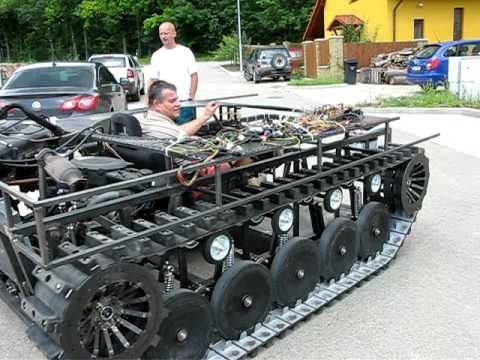 A 25-liter tank and moderate fuel consumption provide a cruising range of up to two hundred kilometers. The extended wheelbase provides excellent stability at high speeds and safety when traveling with a passenger. In general, I sat down and went.
A 25-liter tank and moderate fuel consumption provide a cruising range of up to two hundred kilometers. The extended wheelbase provides excellent stability at high speeds and safety when traveling with a passenger. In general, I sat down and went.
This model is available in five colors.
The design of the equipment may differ from that shown in the photo.
All construction details are designed and technically implemented in accordance with the main goal - safe and maximum convenient use of RM equipment by customers.
1
Taiwanese TGB engine
Taiwanese TGB engine: single cylinder, 503cc, 40.8 hp and 44 Nm of torque. Cable length 10 m
3
Two-level seat
Comfortable two-level seat will comfortably accommodate the driver and passenger, for the convenience of the latter, the ATV is equipped with handles and a seat back.
4
Improved footrests
The footrest kit is designed for installation on two-seat models of ATVs, footrests do not allow the legs to slide off the footpegs, which allows you to confidently control the ATV in deep mud, when overcoming water obstacles and wetlands areas.
5
26-inch alloy wheels
feature large tread with an aggressive off-road pattern. Tubeless, 26" low-pressure tires with a special directional tread provide good ground contact. An excellent choice for those who are looking for the optimal solution for serious off-road
6
Solid range
25 liter fuel tank and economical engine provide a range of up to 200 km
7
8
Complete lighting package
Modern front and rear headlights with integrated turn indicators brightly illuminate the road and ensure safe driving at night
9
Tow hitch
Tow hitch is standard.